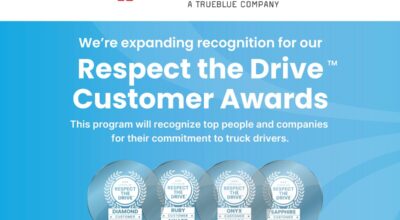5 ways to improve sustainability as a transportation company

There’s a huge push for companies to be more sustainable. In fact, one survey found that 61% of Americans consider company sustainability an important factor when making a purchase. Thirty-four percent also said that they were willing to pay a higher amount for sustainable services.
How can you help your transportation company improve its sustainability, therefore being more appealing to your target market—even if it means that you may need to charge higher rates? Here are a few strategies to consider.
Develop practices to support the 3 R’s
The three Rs of sustainability are reduce, reuse and recycle. Does your company have any practices in place to encourage its employees to make these Rs a priority? If not, this is a good place to start.
For example, if you have a breakroom, you can reduce the number of paper coffee cups being used by switching to real cups and installing a dishwasher. Also, ask employees to not print documents unless they need to, instead saving them on a hard drive or in a cloud-based folder where they can be viewed later.
Documents that are no longer needed can also be reused as scrap paper, just as boxes that are no longer needed for one purpose can potentially be used for another. If you can’t find another need, these boxes can also be recycled. To support recycling more, set one of the old boxes by each vending machine for empty bottles and cans.
Consider eco-friendly vehicle and fuel options
Many EV manufacturers have promised that 2022 would be the year that they will start to deliver electric big rigs. While some are still in the midst of pilot programs, the trend toward more EV vehicles in general suggests that this will be a more concrete option in the near future. So, you could start planning now to replace your gas trucks with EV options.
If this is too costly, at least consider using biofuels in your current trucks. Biofuels can be made from natural products, such as old cooking oil and animal fat. According to the U.S. Energy Information Administration, these fuels have fewer negative environmental effects. Namely, they are non-toxic, biodegradable and, when burned, produce fewer harmful emissions.
Ask for funding to support your sustainability initiatives
The Office of Energy Efficiency & Renewable Energy (EERE) shares that the Bipartisan Infrastructure Law allows this office to support the research and development of a more sustainable transportation and freight infrastructure. One way it does this is by offering funding for certain initiatives.
If you’re willing to take part in the research and development process, you can review the EERE’s funding opportunities to see if any would work for your business. If you find one (or more) that does, you just apply for funding and see if the government will pick up the cost.
Create a more sustainable workforce
One of the ways that individuals can become more sustainable is to use their vehicles less and when they do have to go somewhere, commute as a group. You can work these same strategies into your transportation company’s business model.
If any of your employees can handle their job responsibilities when working remotely, allowing this option shows that your company is taking steps to reduce the impact of vehicle emissions on the planet. For those that need to be on-site, work with a local mass transit provider to get your workforce benefits such as reduced bus or subway fares.
Use sustainable products and services
You can also improve sustainability indirectly by working with suppliers and vendors that have these types of initiatives. Look to create partnerships or business relationships with companies focused on recycling, “going green,” and otherwise protecting the environment.
If you’re unsure whether the businesses that you work with are taking steps toward being more sustainable, just ask. Most are more than willing to share what they’re doing because it’s important to them, and they know that it’s also important to consumers.
Some will even place this information on their website. Incidentally, this is also where you should place your sustainability initiatives so that others will know upfront that you are committed to improving your sustainability and helping to protect the world for generations to come.
Want to take more of these steps to the road? Check out how to help your drivers become more fuel efficient!


